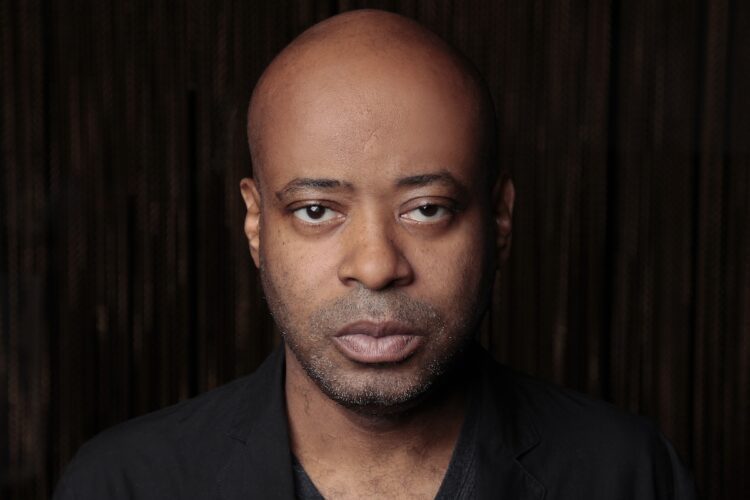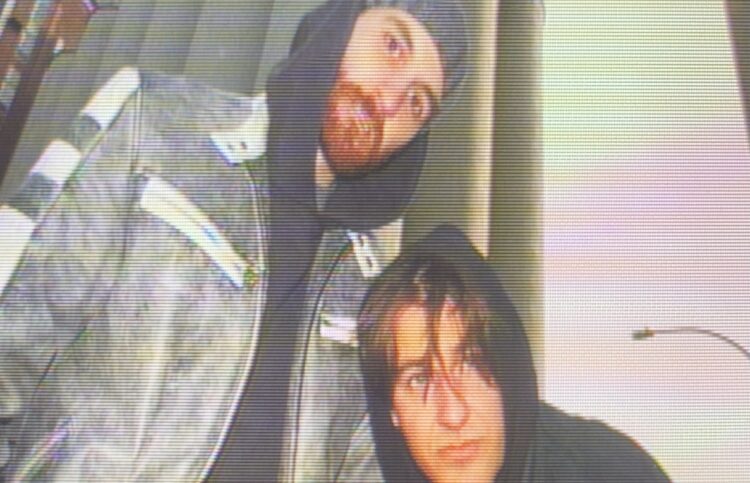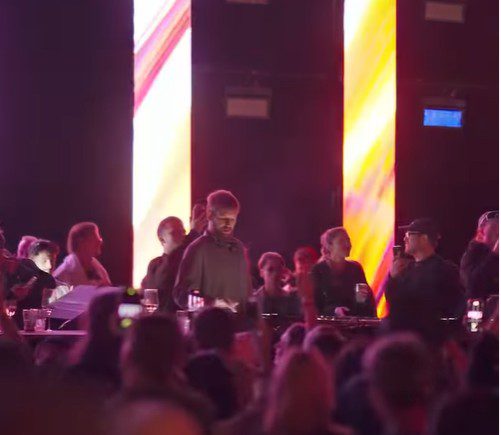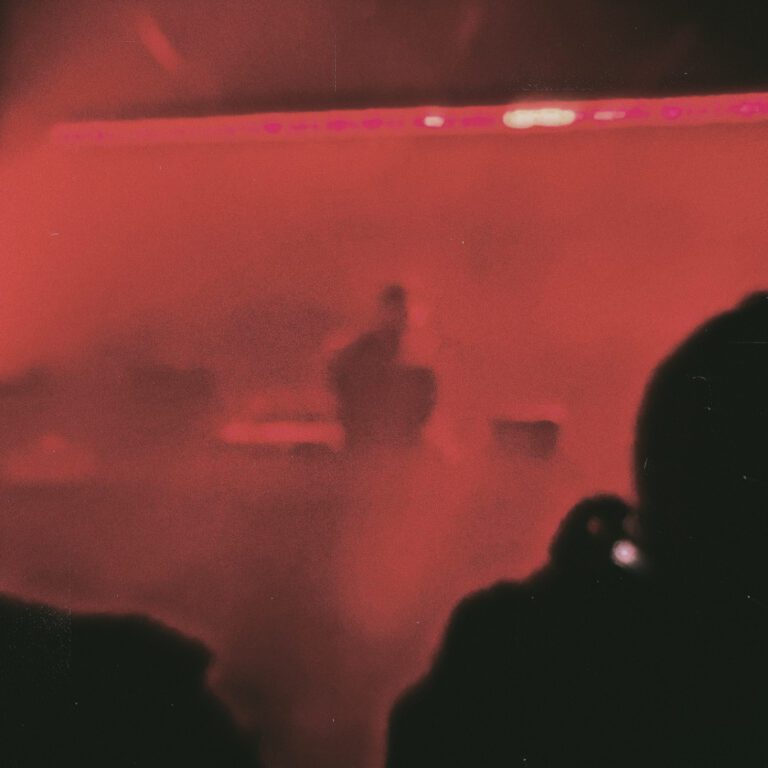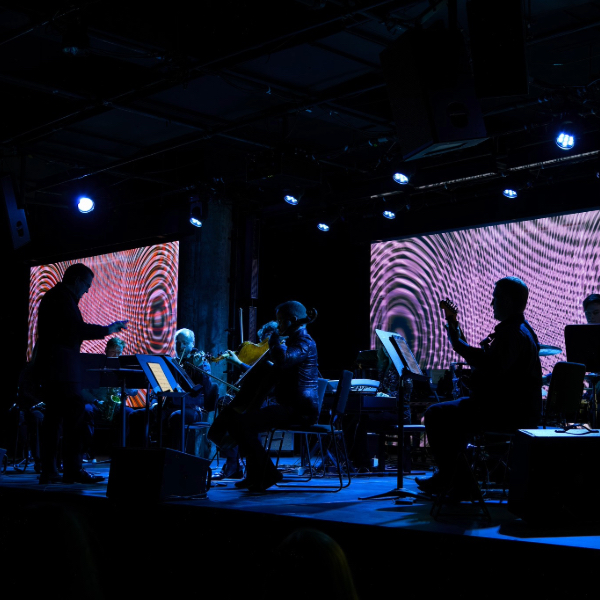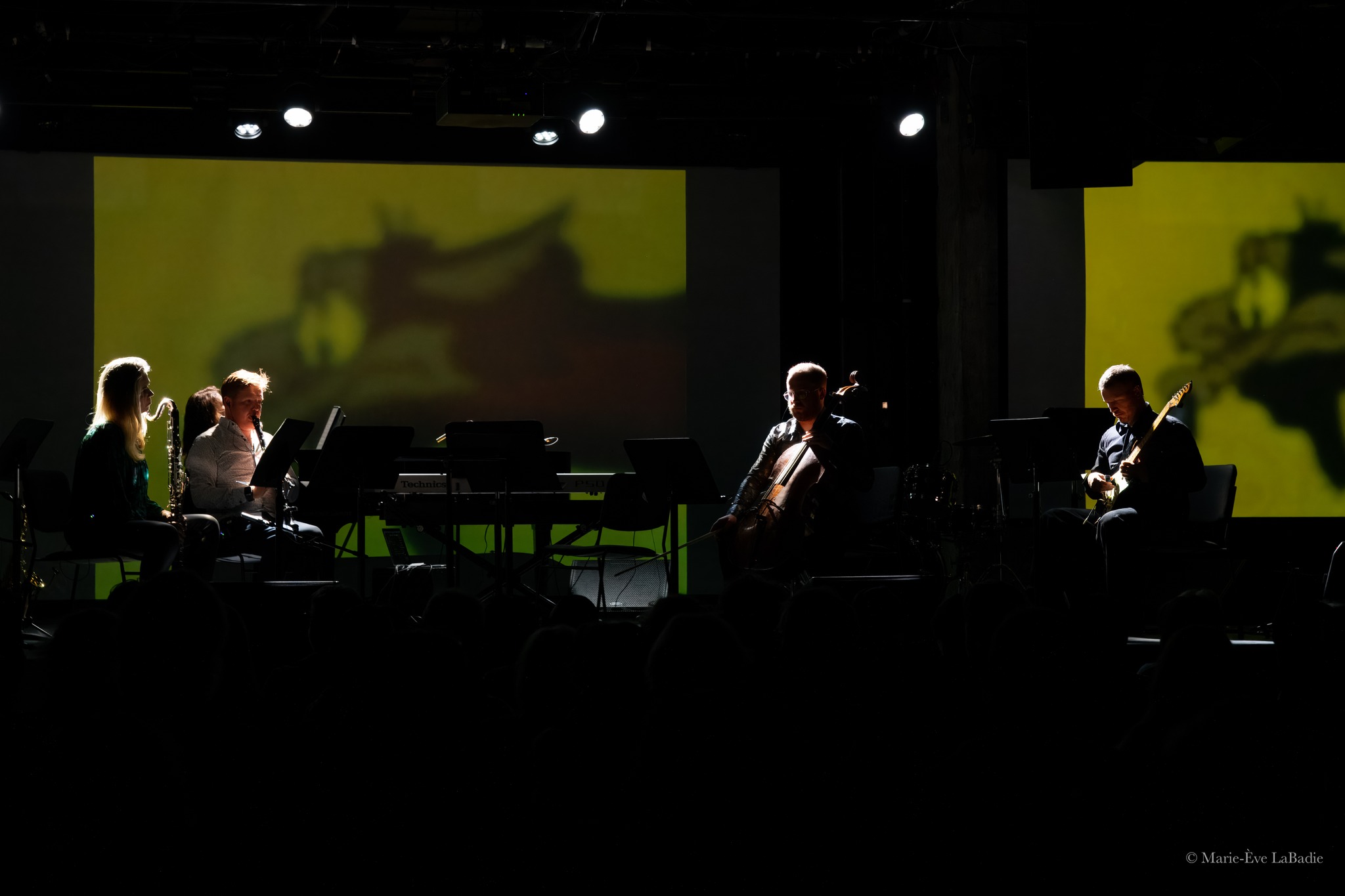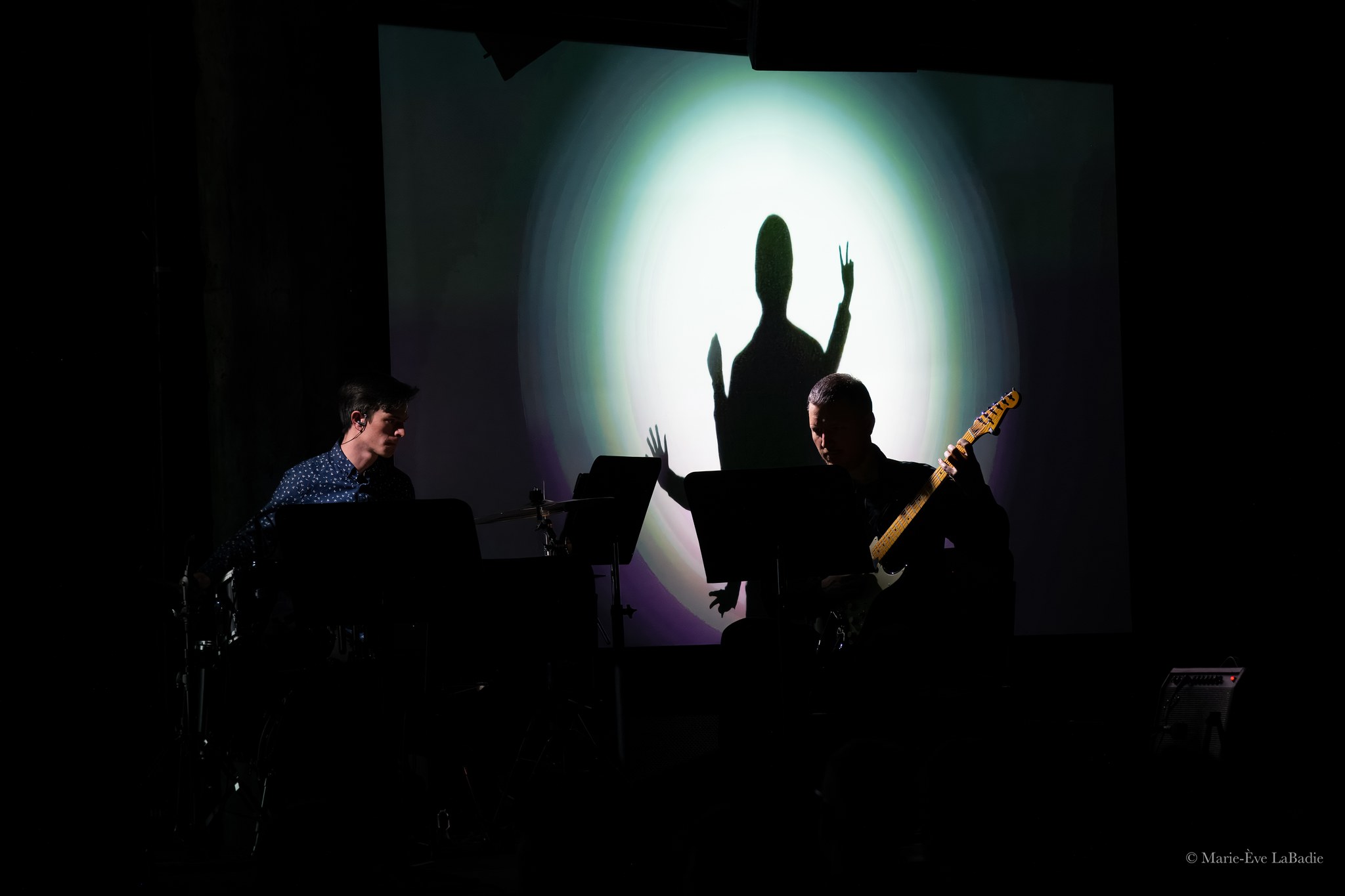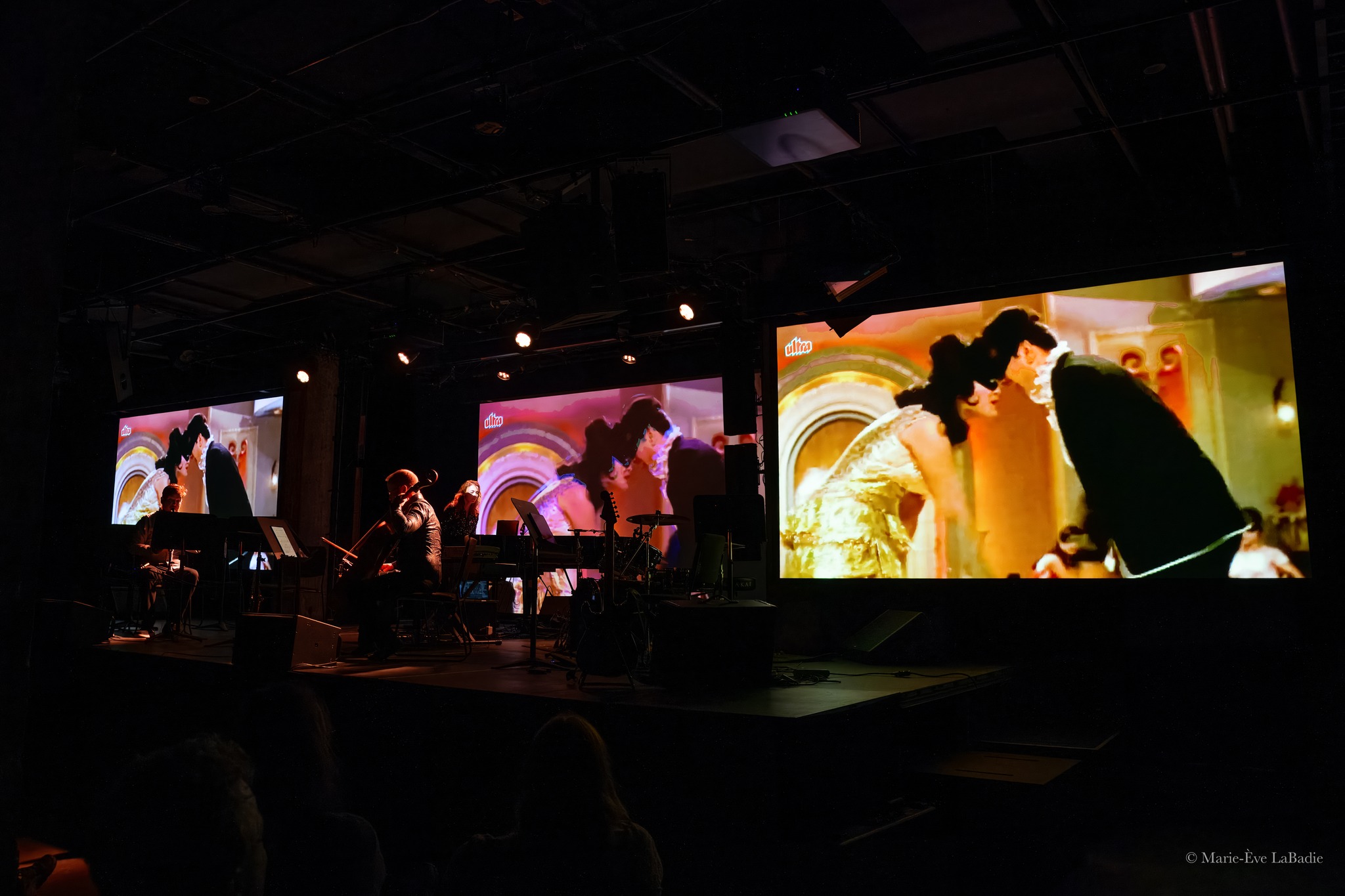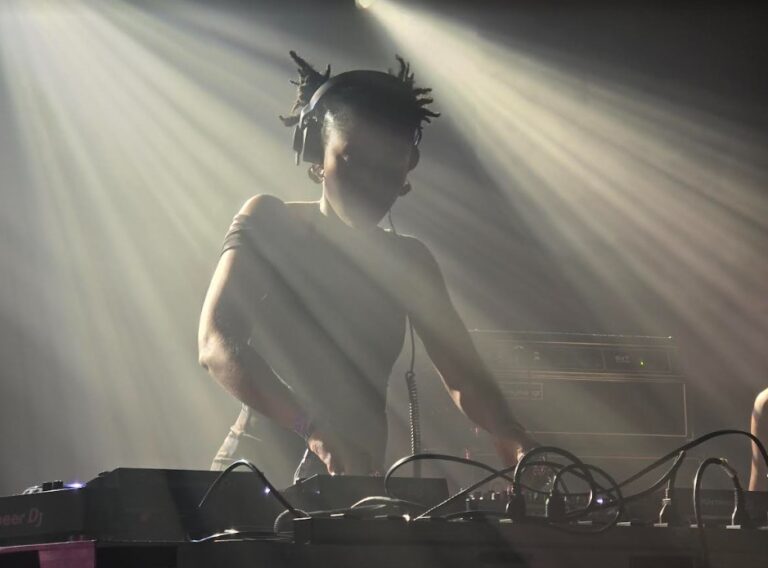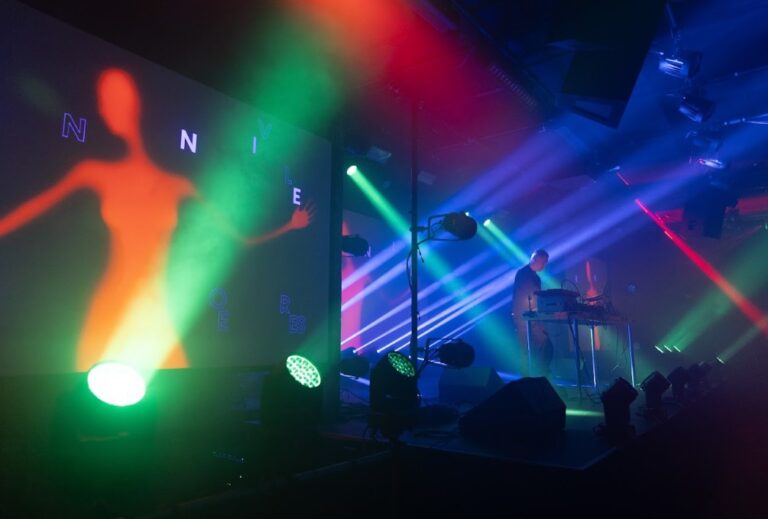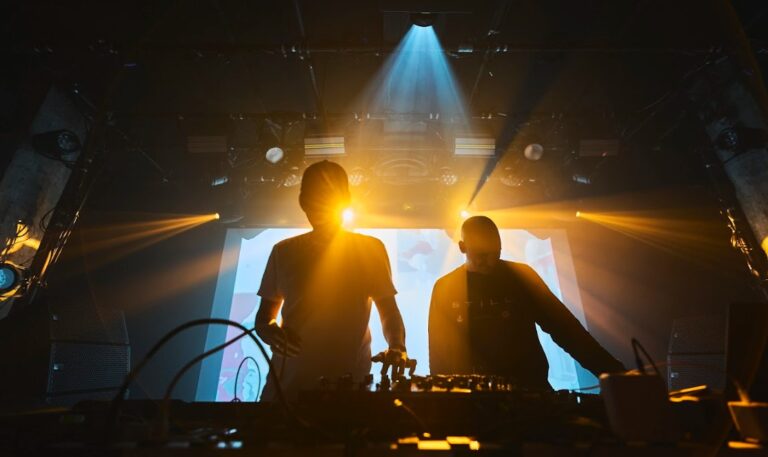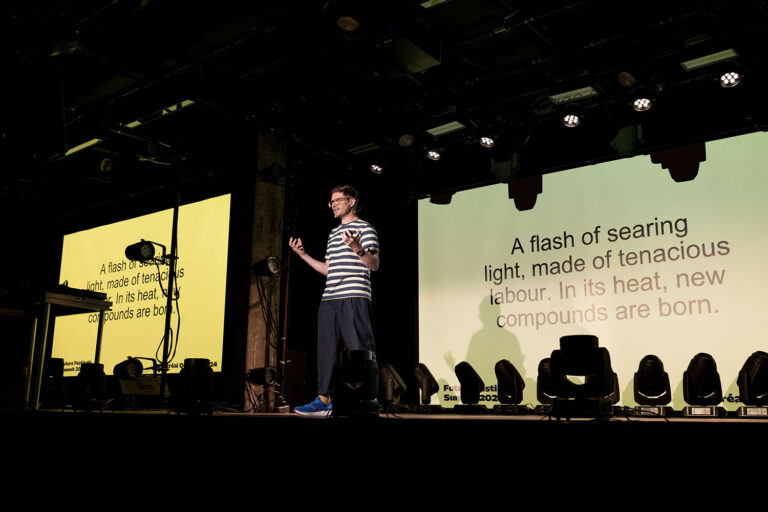Techno’s godfather, Juan Atkins—one half of the pioneering duo Cybotron—took to the Société des Arts Technologiques to deliver an unmissable performance for techno purists. Celebrated as a founding force behind the sound born out of 1980s Detroit, Atkins gracefully delivered a classic techno set full of his signature melodies, distorted robotic vocals, and unmistakable use of the Roland TR-909—the drum machine that laid the foundation for techno itself.
He began the night slowly, layering mechanical sounds that gradually built in intensity—playing with frequencies as the dance floor warmed up. The SAT’s raw concrete pillars rose above the crowd like the skeletal remnants of a disused factory, a fitting backdrop for the industrial pulse of Atkins’ sound—at times harsh, yet always melodic.
Just blink, and you might find yourself suddenly transported to a pulsating Motor City warehouse in the early morning hours.
As the saturation of sound gave way and the lights flickered in deep shades of green, minimalist drum kicks gave way to the groovy, synth-laced melodies that have defined Atkins’ illustrious career as a producer and DJ. The multi-generational crowd of ravers in attendance was taken on a true sonic voyage—Atkins weaving his techno-futurist sound together with synths and bouncing funk basslines, a nod to his early influences.
Leaning on more than 40 years as a selector, he turned up the BPM, blending a rich array of styles—from early synth music to Italo-disco—without ever losing the core of his sound. The apex of the night came when he dropped Giorgio Moroder’s “Chase”, drawing cheers from the crowd. A brief flash of nostalgia, it lent itself perfectly to the groove of the night, echoing the roots of techno without ever feeling retro.
As a parting gift to the dancefloor, Atkins closed his two-hour set with a tasteful sprinkle of jungle—a fast-paced closer that left the crowd wanting more.
The sounds were industrial yet melodic; the layering of drums, bass, and synths was funky, seamless, and impeccably timed. A true artist behind the decks.
